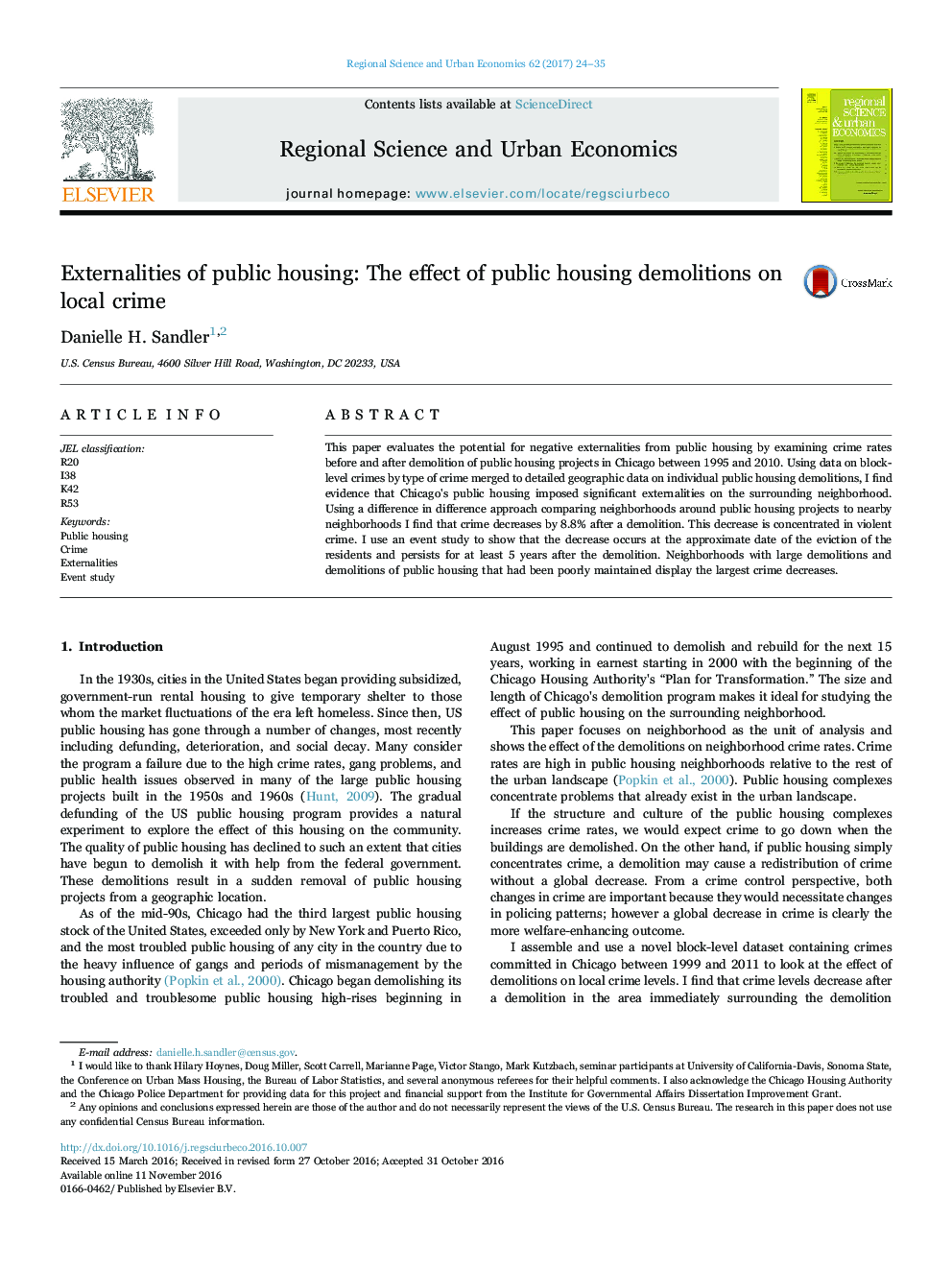| Article ID | Journal | Published Year | Pages | File Type |
|---|---|---|---|---|
| 5103740 | Regional Science and Urban Economics | 2017 | 12 Pages |
Abstract
This paper evaluates the potential for negative externalities from public housing by examining crime rates before and after demolition of public housing projects in Chicago between 1995 and 2010. Using data on block-level crimes by type of crime merged to detailed geographic data on individual public housing demolitions, I find evidence that Chicago's public housing imposed significant externalities on the surrounding neighborhood. Using a difference in difference approach comparing neighborhoods around public housing projects to nearby neighborhoods I find that crime decreases by 8.8% after a demolition. This decrease is concentrated in violent crime. I use an event study to show that the decrease occurs at the approximate date of the eviction of the residents and persists for at least 5 years after the demolition. Neighborhoods with large demolitions and demolitions of public housing that had been poorly maintained display the largest crime decreases.
Related Topics
Social Sciences and Humanities
Economics, Econometrics and Finance
Economics and Econometrics
Authors
Danielle H. Sandler,
